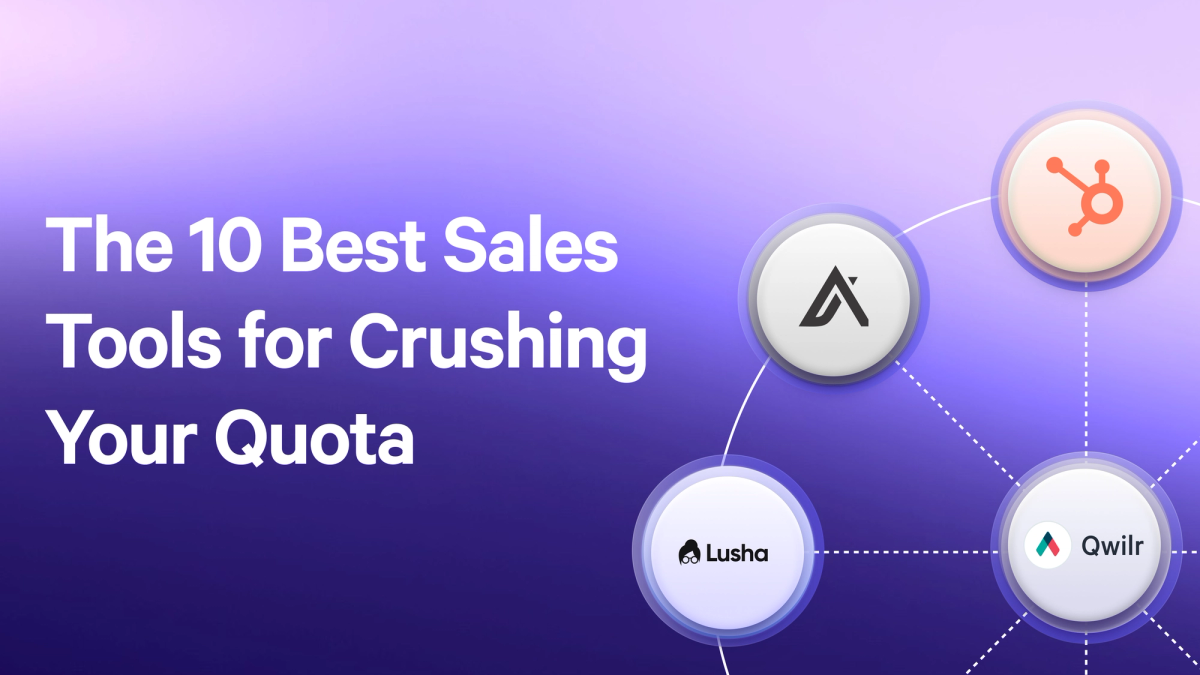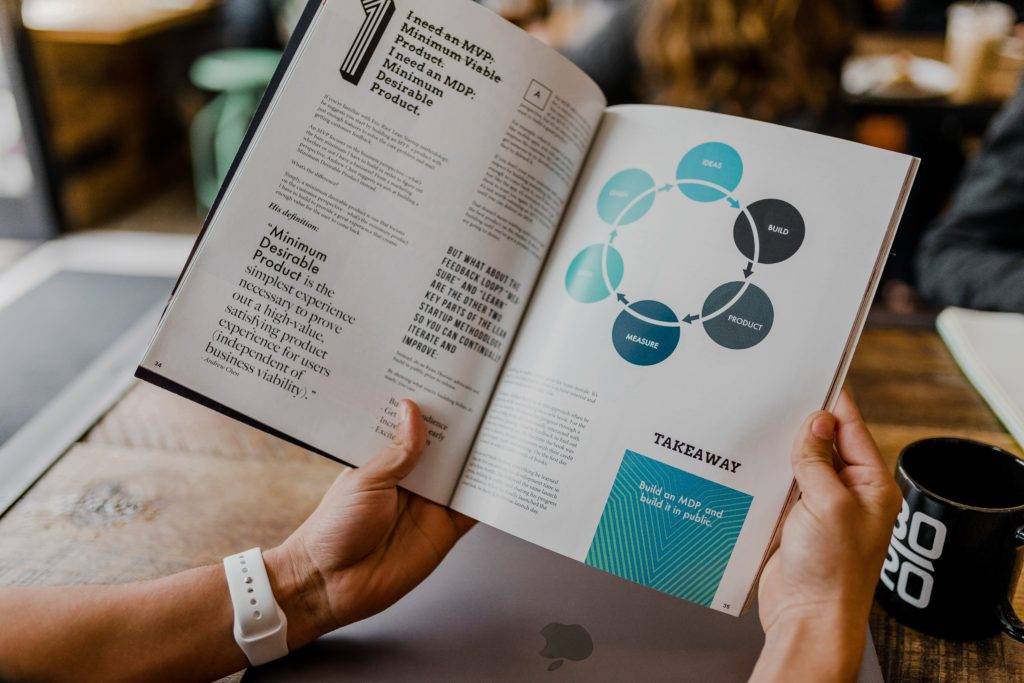Strategic use of buyer intent data is fast becoming a necessity in modern B2B sales. Gartner research has shown that organizations using intent data are twice as likely to have an outbound conversion rate of 10% or above (compared to an average rate of 6%).
With 62% of B2B businesses now using at least one intent data solution, it’s unlikely that this growing trend will reverse any time soon.
In this article, we’ll take a look at the different kinds of buyer intent data and their benefits. We’ll highlight some of the leading intent data tools and give you some essential tactics to help you get the most out of your data sources.
What is buyer intent data?
Buyer intent data is information about your prospective customer. It includes relevant engagement with your content, product, and sales materials (as well as those of your competitors or other active participants in your industry).
Companies can use a wide variety of buyer intent signals to qualify leads and discover where they are in their buying journey, as well as information about which competitors they’re considering, their price threshold, and any other relevant behavioral considerations.
Where does buyer intent data come from?
Buyer intent data comes in three categories - first-party intent data (also known as internal data), second and third-party intent data (also known as external data).
- First-party data is information you’ve collected directly from the customer. If they’ve filled out a contact form, called you, or downloaded content from your website via email, that’s all first-party data that you own.
- Second-party data is behavioral data provided by another organization (or ‘party’) who have a direct relationship with the customer. For example, a software platform or online resource with which the customer holds an account. This category includes review sites and social media platforms.
- Third-party data is provided by another organization that only has indirect access to the customer. A third-party provider often collects information through advertising networks, data-sharing agreements, cookies, and search histories. External data is often anonymized, and even though there’s potentially a lot more data gathered this way, the quality and accuracy of the data can be compromised by the collection methods.
What are the benefits of using buyer intent data?
If your offer has a high average contract value, then buyer intent data becomes massively useful.
For a relatively low investment of time and money, you can leverage this data and the insights it provides to pinpoint potential buyers who are already displaying purchase intent more accurately.
Addressing this hidden demand for your offer allows you to pivot away from cold outreach and improve your conversion rates - and with high contract value solutions, even a marginal improvement in your win rates can make a substantial impact on your bottom line.
There are three ways that buyer intent data can improve the effectiveness of your sales and marketing strategies.
Understanding your customers
Knowledge is power, and knowing your customers is key. With this maxim in mind, it’s obvious to see how buyer intent data can improve your sales results. Buyer intent data can help you understand:
- Who’s buying your products
- Who’s responsible for the research (and the final buying decision)
- Your ideal customer’s buying process and go-to sources of information
Disseminating this data systematically through sales playbooks and using it to craft ICPs will provide valuable insight and context for your sales team, resulting in improved sales performance.
Your marketing teams can harness this more detailed understanding of your customers to provide other benefits, too - such as account-based marketing (ABM).
Better account-based marketing, more personalized sales engagement
Knowing your customers well means you can communicate more effectively and develop an ABM strategy.
HubSpot defines ABM as:
“A focused growth strategy in which marketing and sales collaborate to create personalized buying experiences for a mutually identified set of high-value accounts’.
If you’re narrowing your outreach and marketing efforts to a very select set of accounts in this way, then buyer intent data becomes even more important, helping to:
- Provide a greater focus for your content marketing and messaging
- Improve your sales engagement program
- Personalize and tailor your cold emails and other outreach to the exact stage of the buying journey, adding meaning and value at every stage of the sales cycle
- Pair your downstream intent data with your CRM to strengthen existing customer relationships and improve retention
Advanced prioritization and lead qualification
Buyer intent data can significantly improve your lead qualification process by allowing you to disqualify prospects who are a bad fit significantly earlier.
Using the extra data points will enable you to score leads much more accurately and refine your account prioritization, making sure that your lead generation efforts are more closely aligned with the target audience’s needs and stage in the buying cycle.
You’ll reduce churn, as you’ll have a better understanding of your customer’s pain points through the data you’re tracking. These combined factors will yield a greater proportion of qualified leads and help to improve your sales velocity.
The three best buyer intent tools
With so many choices available, it’s important to research your tools thoroughly to find the software that matches your needs and your industry.
It’s not just a case of finding the most attractive set of features, either - when it comes to B2B intent data, the size and geographical spread of a tool’s database are crucial, along with the recency of the data.
It’s important to see how these tools play together, as well. Most companies tend to use buyer intent data sources in combination to improve overall data reliability and to provide deeper intelligence about target accounts. Used in isolation, the data from any one tool can be subjective and prone to error, particularly if those metrics rely primarily on third-party data.
There are three key indicators against which buyer intent data should be scored, and any good tool should be built to provide clear and comprehensive measurements against these.
- Recency - How recently has a prospect signaled positive intent? If you’re not getting the freshest data, you might chase a prospect who’s already moved on or purchased elsewhere.
- Frequency - How many times has a prospect signaled positive intent? Knowing when and how often a prospect has engaged with your touchpoints can be essential for planning targeted outreach.
- Engagement - How deeply has a prospect engaged with relevant content? If you can’t see how they’re using content related to your solution, you can’t be sure that their reasons for visiting are a true signal of buying intent.
Qwilr
Qwilr embeds page-level and account-level analytics directly in your sales collateral, allowing you to gather first-party intent data to understand how your potential customers interact with your sales materials and proposals.
Along with total view counts for each page, Qwilr analytics provides the location of each viewer, the date and time they viewed the page, how long they stayed, and which sections they spent the most time on.
Zoominfo
Zoominfo is a multiplatform operating system that combines powerful tools for sales, marketing, talent, and operations management.
In addition to a massive database, Zoominfo boasts a host of handy features, including ‘Scoops’ - actionable intelligence leads that help you identify fresh opportunities and track organizational changes in your target accounts.
Apollo.io
With flexible, affordable pricing, Apollo.io is hard to beat. It offers innovative features such as pre-built multi-channel outreach strategies and a Chrome extension with a set of great integrations, enhancing the functionality of essential tools like LinkedIn, Gmail, and Salesforce.
Buyer intent playbook - tactics you can use
There’s no such thing as the typical B2B buyer, and your industry, positioning, and audience will largely dictate the tactics you choose to leverage your intent data. If you’re operating a leaner set of marketing materials, you may struggle to access high-quality first-party data, and your customers might not necessarily spend long periods of time researching solutions on comparison sites.
To build your buyer intent playbook, it’s important to explore how different kinds of intent signals relate to your customer’s buying journey and then select sources and strategies to fit.
Website visitor analytics and engagement
One of your primary sources of first-party data, your website analytics can provide a wide range of detailed intent insights into how visitors are using your site.
Custom analytics tools like 6sense allow you to investigate your visitors further, providing deeper intelligence on visits from prospective customers and helping you explore prospects' levels of interest using Contact Engagement Scores.
These scores are graded using combined criteria such as the role of the team member from your target account and the buying stage indicated by the user’s engagement.
Review sites
Well-established and trusted review sites such as G2, Capterra, and TrustRadius are a great source of second-party data. In addition to their function as a product comparison and review aggregator, they frequently offer a comprehensive set of buyer intent intelligence services.
If potential buyers are exploring your solution on these second-party sites, you can opt-in for real-time alerts. These can be integrated with your CRM, allowing your SDRs to respond rapidly.
As studies have shown, there is a need for speed. A study from Chili Piper found that 78% of B2B customers purchase from the vendor that responds first. It also showed that responding within the first minute increases lead conversions by 391%.
Used in conjunction with other buyer intent tools, review sites can add a whole new layer of detail to your sales engagement program.
Identify upsell/cross-sell opportunities with existing customers
If you’re already using a combination of different buyer intent data sources integrated with your CRM, then it should be a relatively easy task to put that toolkit to work identifying existing customer opportunities.
Treating your existing customers to this level of scrutiny will provide valuable ideas about how to further strengthen the relationship and better meet their needs. By looking for intent data that demonstrates their interest in adjacent products and services to yours, you can also explore opportunities to proactively upsell or cross-sell.
Leverage intent data for micro-targeted ad campaigns
As a shared initiative between your sales and marketing teams, intent data can deliver significantly improved results from your paid advertising campaigns.
Combined with strong second-party data (e.g., a review site such as G2), a well-targeted display ad campaign can reach new and in-market accounts at the discovery stage ahead of your competitors. Want to see this in action? By using intent data in this way, ScienceLogic improved ad performance by 30%.
FAQs
Why is buyer intent important?
Buyer intent is important because it allows companies to align their sales and marketing strategies more closely with the needs of their prospective customers.
How does buyer intent data work?
Buyer intent data provides companies with information they can use to qualify leads and discover if they’re ready to make a purchase decision, along with a range of other relevant behavioral considerations and intelligence about company decision-makers.
How is intent data collected?
Intent data can be gathered internally from first-party sources like your website, sales, or marketing materials. It can also be gathered externally and provided as a service by second and third-party data providers.
Final thoughts
Incorporating buyer intent data into your B2B sales strategies and marketing campaigns can yield real benefits for a range of enterprises, particularly those using ABM to sell high contract value solutions.
It’s important to make sure that you use buyer intent data to augment and add value to your sales strategy without placing too much emphasis on the tools and processes used to collect the information.
As data privacy laws, including GDPR become more common, and the phasing out of third-party cookies and other such privacy measures become increasingly embedded, these tools and their uses will change, so relying too heavily on any one process is something to avoid.
Spreading your data collection efforts across multiple points in the buyer journey will also help you gain a fuller understanding of how to satisfy buyer intent best. Tools like Qwilr can supply analytics data from further down the funnel to help you understand more about both your buyer and your actions and processes.
Try a free personalized demo with Qwilr today to see how buyer intent data can help you drive sales faster.
About the author

Dan Lever|Brand Consultant and Copywriter
Dan Lever is an experienced brand consultant and copywriter. He brings over 7 years experience in marketing and sales development, across a range of industries including B2B SaaS, third sector and higher education.


